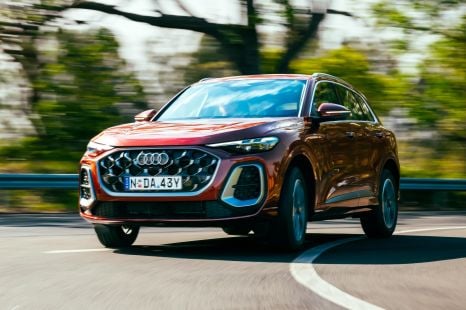

James Wong
2026 Audi Q5 review: Quick drive
5 Days Ago
The Suzuki Swift Hybrid harkens back to the nameplate's cheap and cheerful roots, but there's plenty of substance in this city-sized hatch.
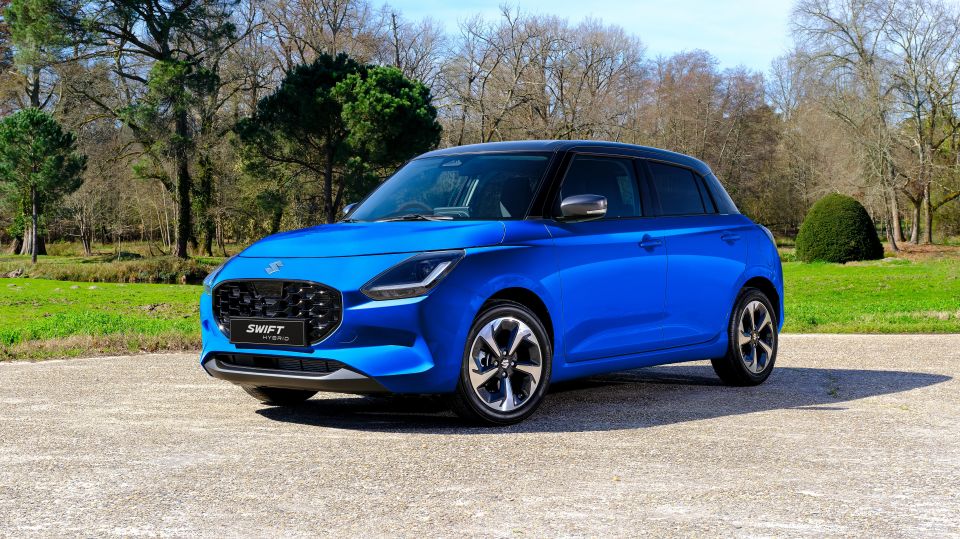


Quickly see how this car stacks up against its competition. Select any benchmark to see more details.
Where expert car reviews meet expert car buying – CarExpert gives you trusted advice, personalised service and real savings on your next new car.
Say hello to Australia’s cheapest new hybrid vehicle you can buy – the 2024 Suzuki Swift Hybrid.

Oh yes, while the MG 3 has gone from $20,000 budget-friendly econobox to Yaris Hybrid-rivalling premi-ish positioning, the fourth-generation Swift is launching as a hybrid-only proposition and the first step in Suzuki’s electrified resurgence in Australia.
I will preface this by saying the little Suzuki isn’t quite a ‘full’ hybrid like its Chinese and Japanese rivals, though its 12V mild-hybrid system still manages to offer competitive efficiency for a much cheaper price.
Further, unlike more common 12V systems in many modern cars, the Swift’s integrated starter generator acts as an electric motor to assist the petrol engine on takeoff and under load, and also extends the idle stop/start function to engage as the vehicle slows to a halt, switching off the engine from around 10-12km/h.
We can get into the specifics of the drivetrain later, but the headline is that Suzuki claims a very thrifty 3.9L/100km for the Swift Hybrid manual, and 4.0L/100km with the CVT. CO2 emissions are under 100g/km, too.
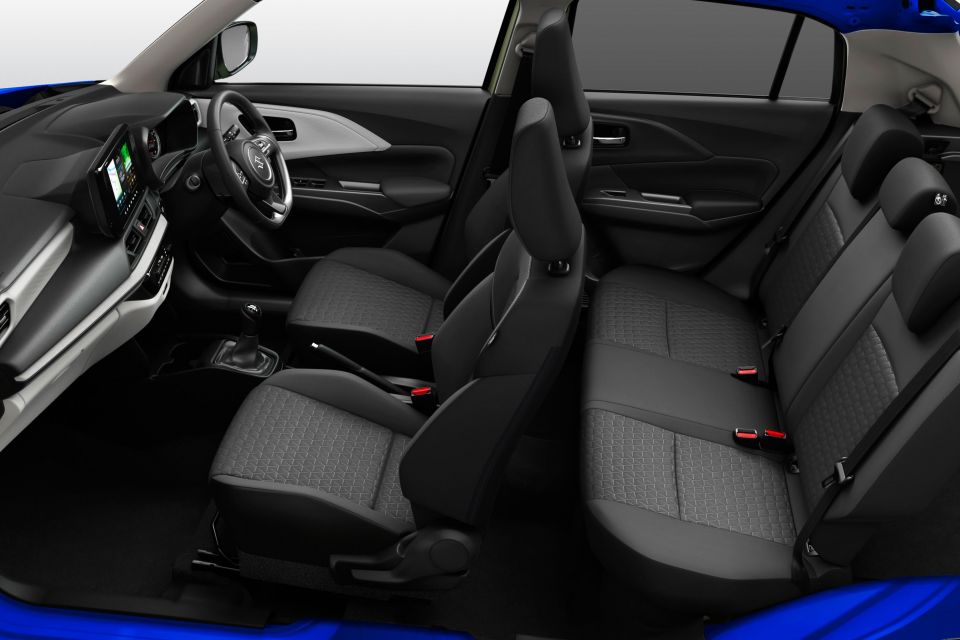
Even better, those figures are entirely achievable – at least I managed to match the auto’s claim on our launch drive. Again, more on that later.
The other headline is the pricing. Starting from $24,490 drive-away, the Swift Hybrid is Australia’s cheapest new electrified vehicle. By comparison, the most affordable MG 3 Hybrid+ is $27,990 before on-road costs.
Could the new Swift Hybrid be the default choice for first car buyers, eco-conscious city dwellers and rental fleet operators? Well, read on to find out…
The Swift Hybrid opens from $24,490 drive-away, with the cheapest CVT model $26,990 drive-away.
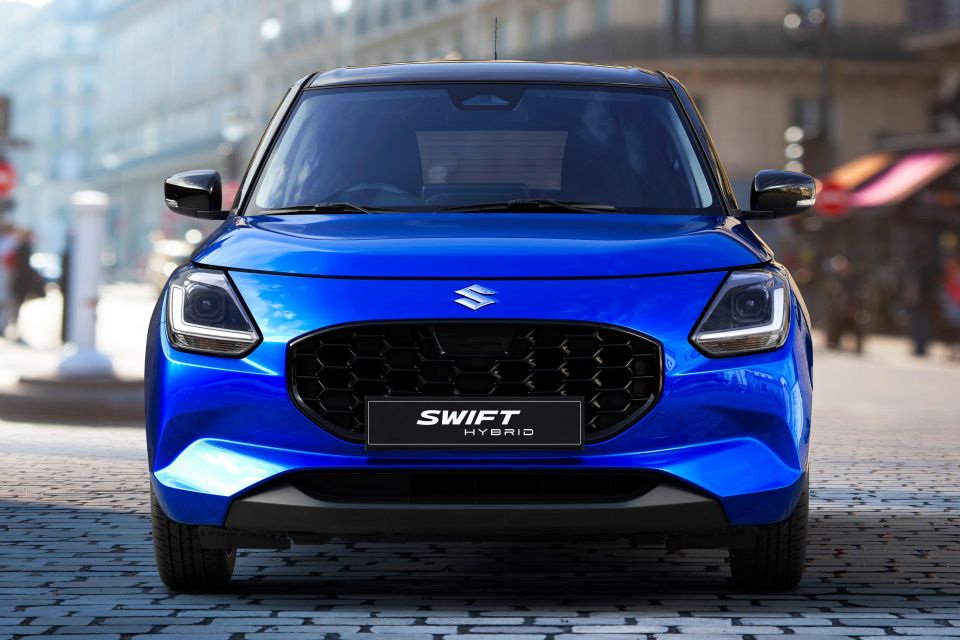
| Model Variant | Drive-Away Pricing |
|---|---|
| 2024 Suzuki Swift Hybrid 5MT | $24,490 |
| 2024 Suzuki Swift Hybrid CVT | $26,990 |
| 2024 Suzuki Swift Hybrid Plus CVT | $28,490 |
| 2024 Suzuki Swift Hybrid GLX CVT | $29,990 |
To see how the Suzuki Swift Hybrid lines up against the competition, check out our comparison tool.
Buy your new car without the stress. It's fast, simple and completely free.

Great service from Travis and team, second time I have used this business would not hesitate to recommend them to anyone
Craig C.
Purchased a Ford Ranger in Sunshine Coast, QLD
CarExpert helped Craig save $7,224 on his Ford Ranger, now let us save you on your next new car.
Get your BEST priceMuch like the exterior design, the new Swift is very much an evolution, not a revolution of its forebear.
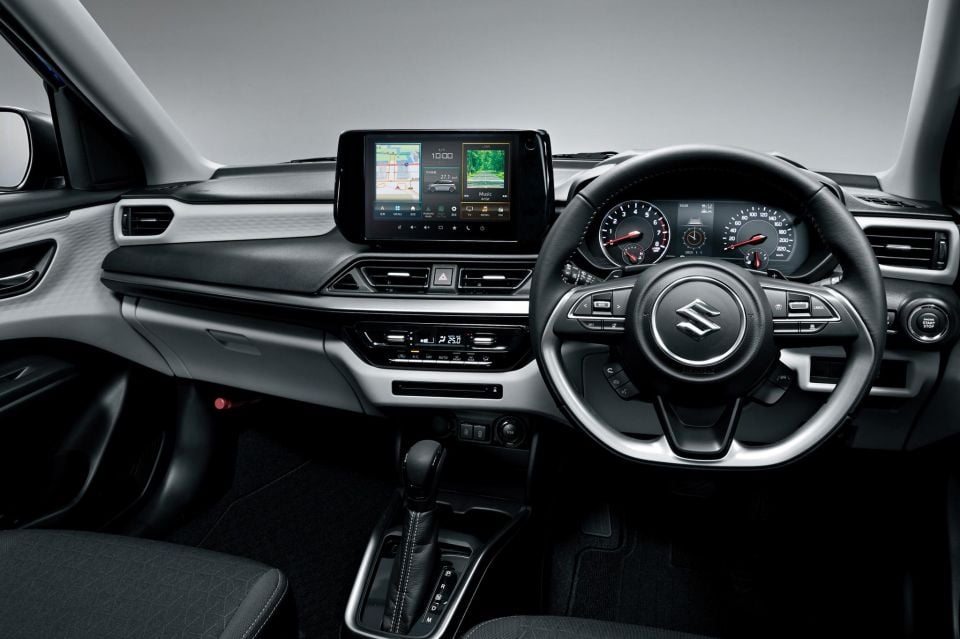
Like the previous generation, the Swift is hardly the last word in material quality or cabin tactility, but it boasts solid ergonomics, thoughtful tech and spacious packaging despite its diminutive dimensions.
Key differences in design largely centre around the dashboard layout, which does away with the integrated touchscreen and circular HVAC motif and instead has a freestanding display sitting atop toggle-like switchgear depending on model variant.
You’re also faced with a chunky steering wheel and revised instrument cluster, which retains analogue dials for the tacho and speedo, though finally we have a digital speedometer readout in the supervision display – hallelujah!
The infotainment system impressively gets navigation, DAB radio and wireless Apple CarPlay as standard across the range. It can be a little sluggish when using the native interface, but it’s otherwise well-equipped and does the job.
I appreciate the little hybrid energy flow diagrams, and the 9.0-inch display is a good size for the class. Wireless Apple CarPlay worked well during our time with the car, too.
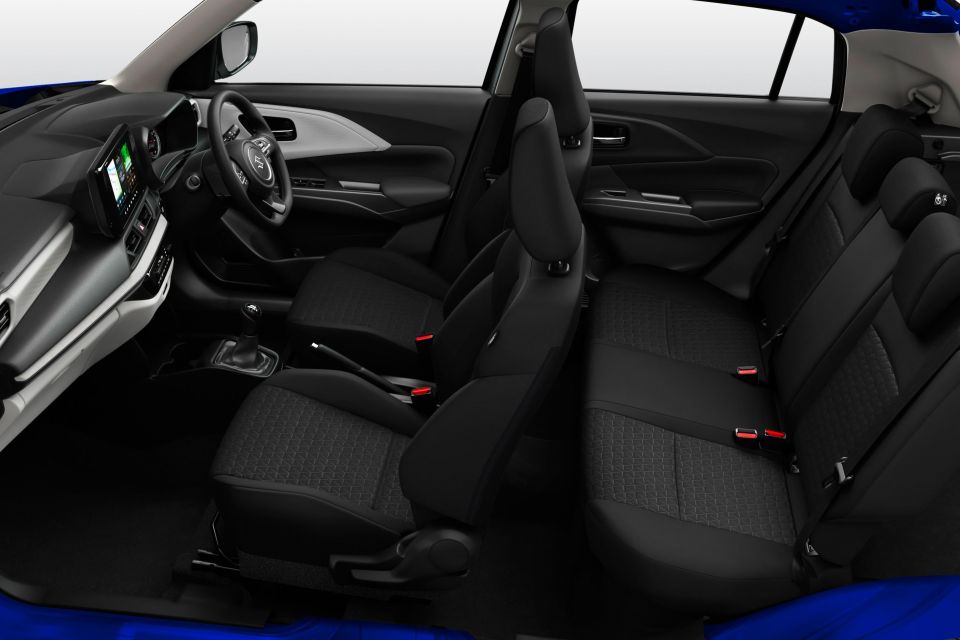
It’s all very simple and functional, which is just fine for a lot of people at this end of the market.
We sampled the interiors of all three variants, and while the base Swift Hybrid lacks a leather-wrapped steering wheel, comfort and tactility of the main touchpoints is all quite pleasing given the price.
The front seats are supple but supportive, and like the previous model have an almost sporty sculpting that supports the shoulders a little more than the basic seat designs of competitors.
Another Swift hallmark is the tall and almost boxy proportions, which help to make the cabin feel light and airy despite its compact dimensions – see below for more.
Like I mentioned earlier, this won’t be troubling a VW Polo for perceived quality. It’s all hard plastics throughout, and there’s no front-centre armrest.
You do get a lightly padded fabric-lined elbow rest in the front doors, though. Again, you have to keep this car’s budget-friendly focus in mind.

The open cabin means decent storage, with a few cubbies and shelves for your odds and ends to go with the decent bottle holders in the doors. GLX versions also get a wireless phone charger ahead of the gear selector.
Not that the old Swift was too compromised in the second row, but the slight increase in most dimensions has resulted in a back seat that can actually hold average-sized adults.
I’m a pretty lanky 6’1 (and a bit) and can sit behind my preferred driving position with good leg, knee and headroom for the class. No it’s not as big as a VW Polo or Skoda Fabia, but it’s smartly packaged and won’t anger any of your friends that have to ride in the back.
Amenities are few and far between, but GLX models get a rear heater duct for chilly toes, and all models get bottle holders in the doors. There’s the requisite anchorage for ISOFIX and top tethered child seats, too.
Boot space is a compact 265 litres – 23 litres up on the old one – with the rear seats in use, expanding to 589 litres with the seatbacks folded up to the window line. As before, the deep boot floor sees a pretty big step up to the folded rear seats.
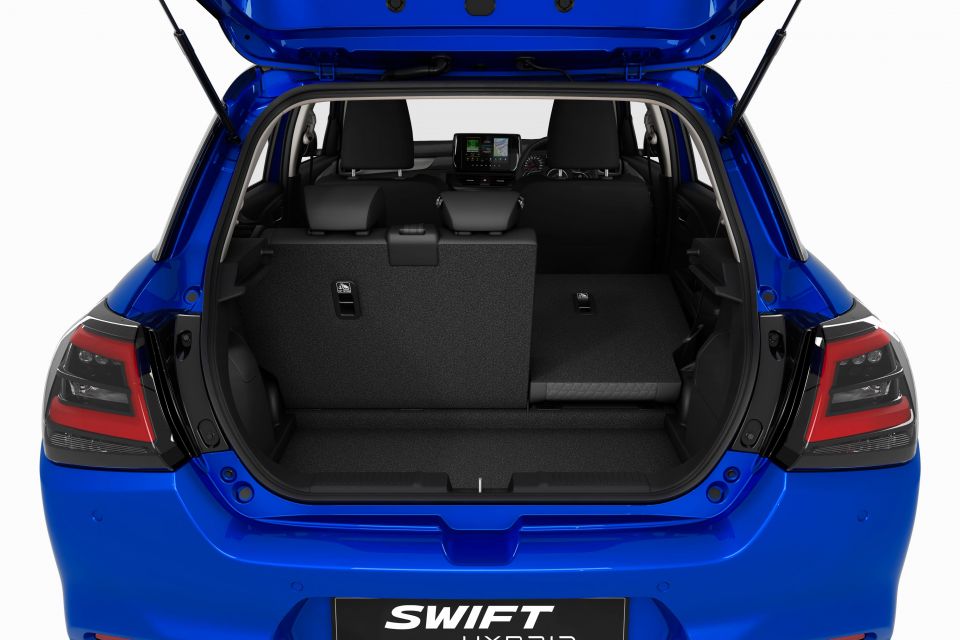
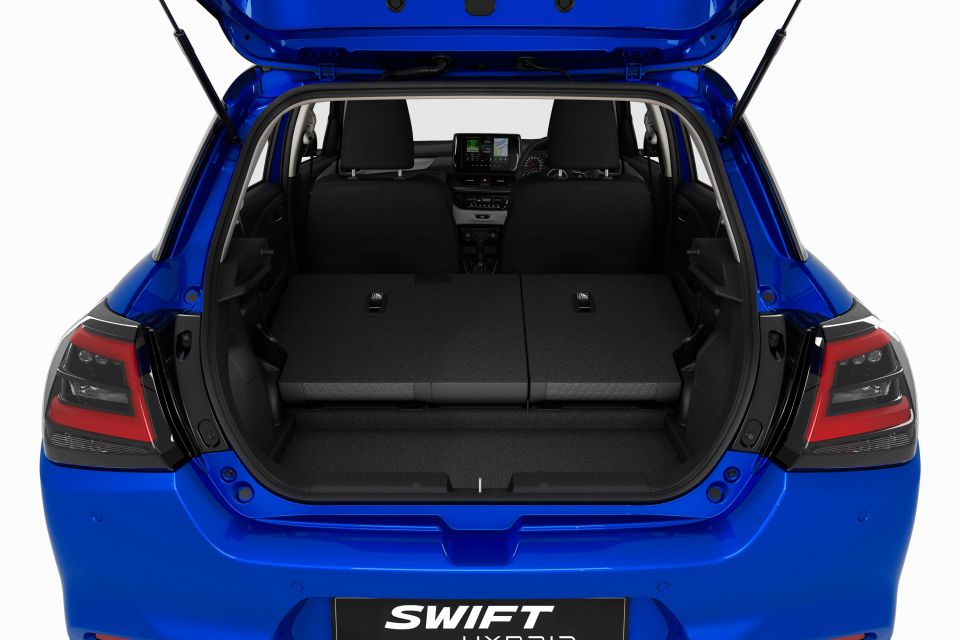
| Dimensions | Suzuki Swift Hybrid |
|---|---|
| Length | 3860mm |
| Width | 1735mm |
| Height | 1520mm |
| Wheelbase | 2450mm |
| Kerb weight | 919kg – MT 957kg – CVT |
| Boot capacity | 265L – Rear seats raised 589L – Rear seats folded 980L – Max volume |
To see how the Suzuki Swift Hybrid lines up against the competition, check out our comparison tool.
All versions of the Swift in Australia get a 1.2-litre petrol engine with 12V mild-hybrid system.
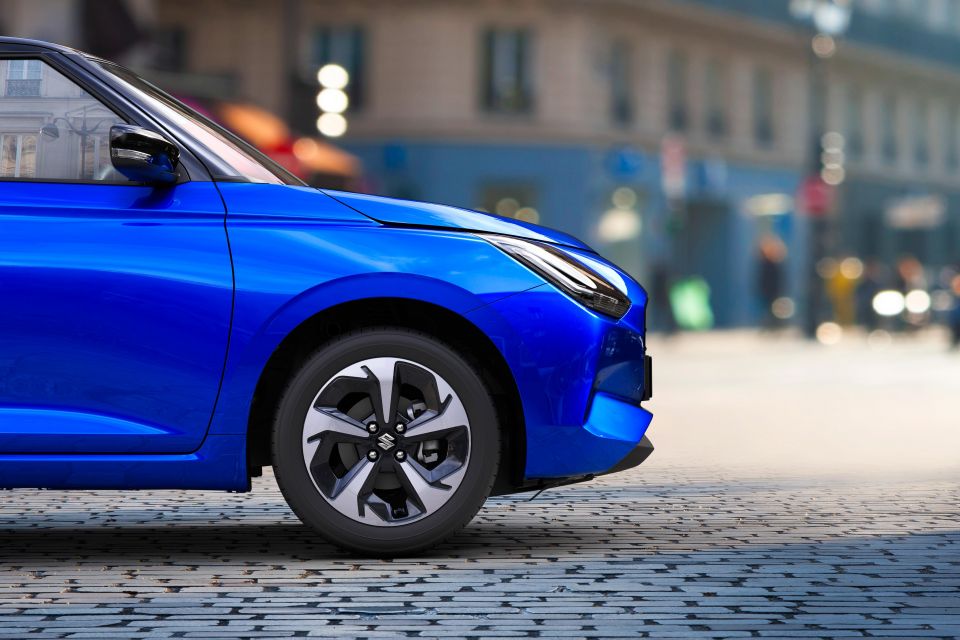
| Technical Specifications | Suzuki Swift Hybrid |
|---|---|
| Engine | 1.2L 3cyl 12V MHEV |
| Power | 60kW @ 5700rpm |
| Torque | 110Nm @ 4500rpm |
| ISG e-assist | 2.3kW 60Nm |
| Transmission | 5-speed manual or CVT |
| Driven wheels | Front |
| Fuel consumption – claimed | 3.9L /100km – 5MT 4.0L /100km – CVT |
| Fuel consumption – as tested | 4.0L /100km – CVT |
| CO2 emissions – claimed | 85g /km – 5MT 90g /km – CVT |
| Emissions standard | Euro 6 – PPF |
| Fuel tank capacity | 37 litres |
| Fuel octane rating | 95 RON |
We managed to get bang on the manufacturer’s fuel claim over a 53-kilometre mixed test loop which included a mix of urban, highway, and regional B-road driving – very impressive.
For reference, the more expensive MG 3 Hybrid+ claims 4.3L/100km on the combined cycle while the Toyota Yaris Hybrid quotes an impressive 3.3L/100km.
It’s also worth noting that unlike its rivals, the Swift Hybrid is homologated to stricter Euro 6 emissions standards and features a petrol particulate filter (PPF), hence its thirst for premium 95 RON unleaded.
To see how the Suzuki Swift Hybrid lines up against the competition, check out our comparison tool.
I’ve always had a soft spot for the fun driving nature of the Swift nameplate, so I was keen to see how that spirit had been infused with the mild electrification of this new model.
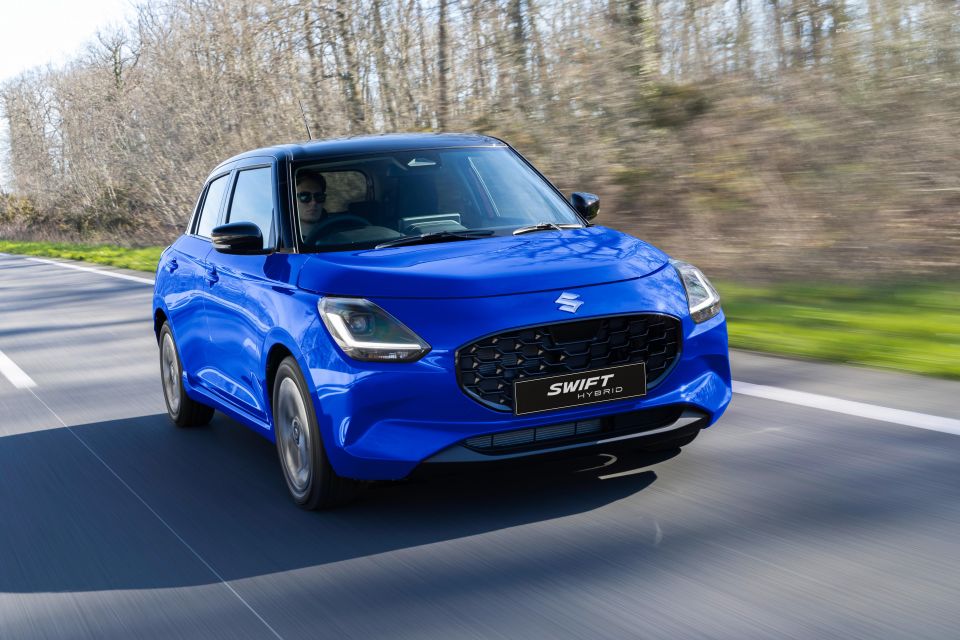
On paper you could palm the Swift Hybrid off as underpowered, with 60kW and 110Nm being less peppy than even the Kia Picanto’s atmo 1.25-litre engine.
However, the Swift’s featherweight mass (919-957kg) helps it to feel much more sprightly than you would expect from the technical specs.
The new 1.2-litre three-cylinder engine has the same sweet thrum as other three-pot rivals, namely the VW Polo, though unlike the Toyota Yaris it’s not as intrusive in the cabin under load.
I drove a Swift Hybrid Plus on the test loop, which is CVT only. The variable auto is smartly calibrated and does well to make the most of the Suzuki’s meek outputs to get you moving at reasonable past, but this ain’t no Boosterjet.
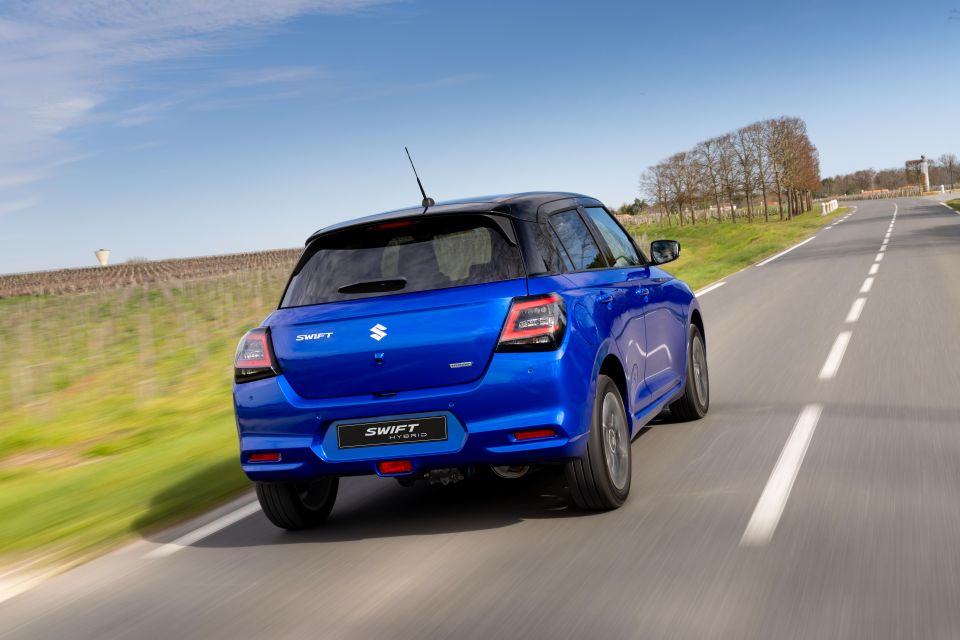
The integrated starter generator (ISG) acts as an electric motor to assist under load to boost performance and minimise fuel consumption on takeoff and hard acceleration, but it’s only making 2.3kW and 60Nm itself.
It operates pretty quietly in the background so there’s no disjointed feel or shunting as it comes online. Even the idle stop-start function is pretty smooth in operation, cutting the engine off from about 10km/h as you come to a stop once the engine is warmed up, and quickly starting it back up when you get off the brakes.
Suzuki Australia doesn’t quote a 0-100km/h time, though the UK model with the same drivetrain quotes 11.9 seconds It’s far from quick, but it gets going just fine and will only feel completely out of breath if you very suddenly need to accelerate to freeway speeds in a short period.
Just remember, this is sold in the UK and Europe (including Germany) with the same drivetrain and it’s rated to hit a top speed of 170km/h with the CVT – bring on the Autobahn!
I had a quick stint in the base manual just to get a feel for it, and while it’s fun to row your own cogs with the five-speeder, it has a bit of a rubbery action and a vague clutch that doesn’t make it as involving as I’d like.
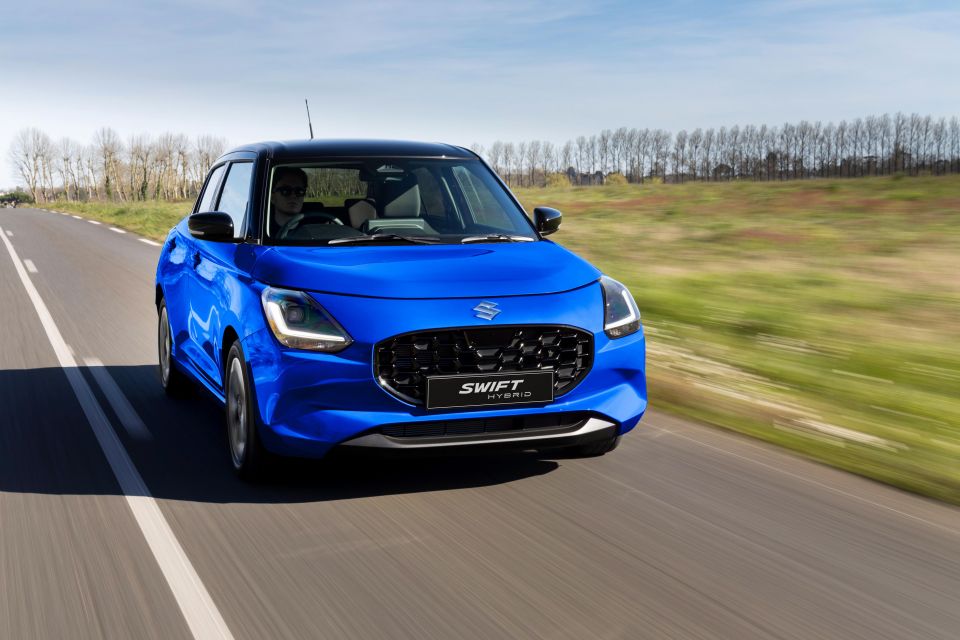
The Swift is still a fun steer, while also being a more insulated and refined car than its predecessor.
The steering is accurate and direct with good weighting and feel, and the light weight makes it eager to turn in and go round corners.
Like stuff from Mazda, for example, there’s a degree of fun baked in even at the base level that makes it a connected and engaging drive for everyday scenarios.
While global outlets complained about a terse ride, I found the Aus-spec Swift to be a really nice balance between comfort and dynamism. It has a suppleness that irons out the lumps and bumps of Melbourne roads while also keeping the body controlled and relatively flat through corners.
We also noticed an improvement in insulation from road and wind noise, courtesy of improved sound deadening and aerodynamics. It’s not the new class leader, but it’s no longer a tinny buzz box once you hit a coarser patch of road.
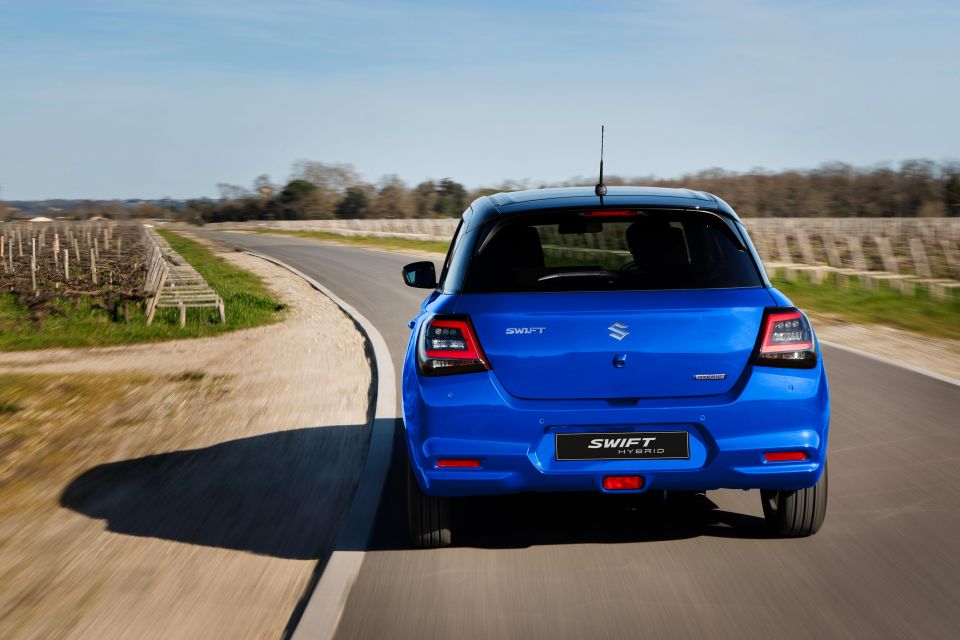
The Swift Hybrid is also impressively equipped from the base level with driver assistance technologies.
All models get adaptive cruise control and lane centring assist (dubbed lane keep assist), giving this entry level car semi autonomous capability on the highway. It’ll come to a complete stop in CVT versions, while manuals cut out at 30km/h.
Step up to the Plus and you get blind-spot monitoring and rear cross-traffic alert, which add a nice safety net when negotiating tight gaps in traffic or reversing out of tight parking spots.
Outward visibility is generally good thanks to the tall glasshouse, though the thick C-pillar does impede over the shoulder visibility – hence why blind-spot and cross-traffic monitoring comes in handy.
Three variants will be available at launch: Swift Hybrid, Plus and GLX.

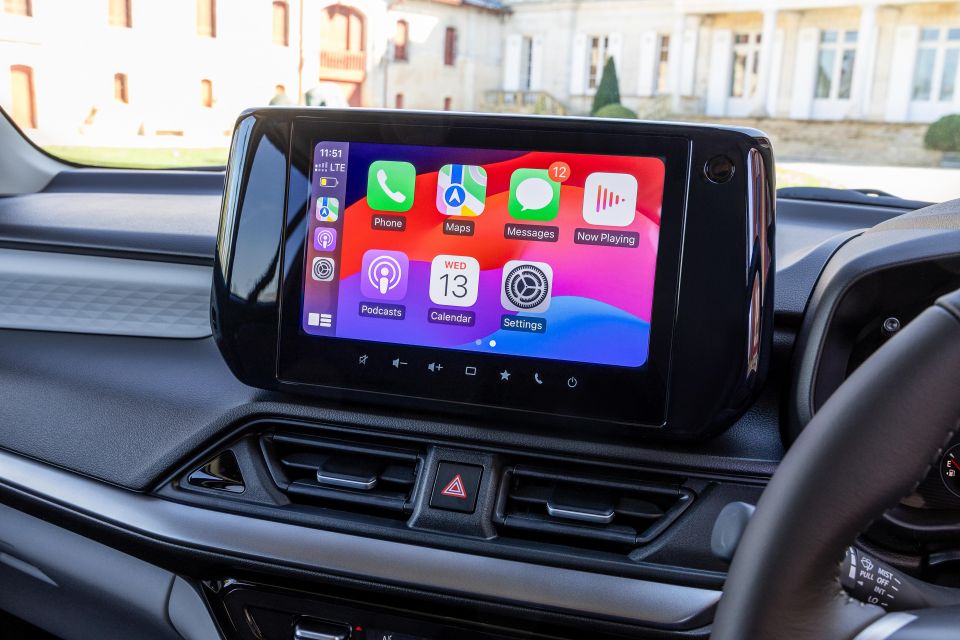
Where expert car reviews meet expert car buying – CarExpert gives you trusted advice, personalised service and real savings on your next new car.
Swift Hybrid standard equipment:
Swift Hybrid Plus adds:
Swift Hybrid GLX adds:
The new Suzuki Swift doesn’t currently wear an ANCAP or Euro NCAP safety rating.
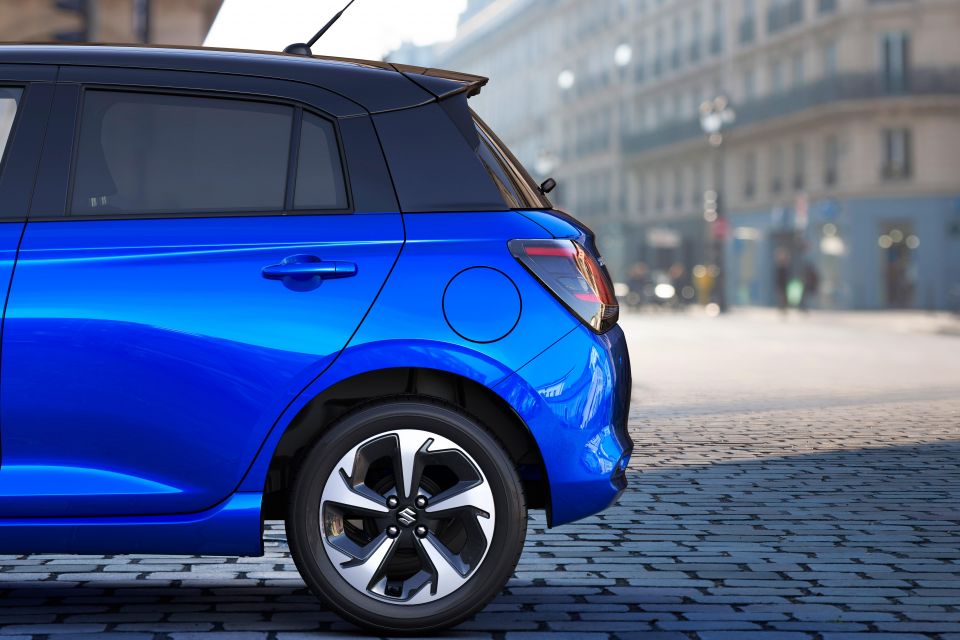
Standard safety features include:
Swift Hybrid Plus adds:
Suzuki covers its range in Australia with a five-year, unlimited-kilometre warranty.
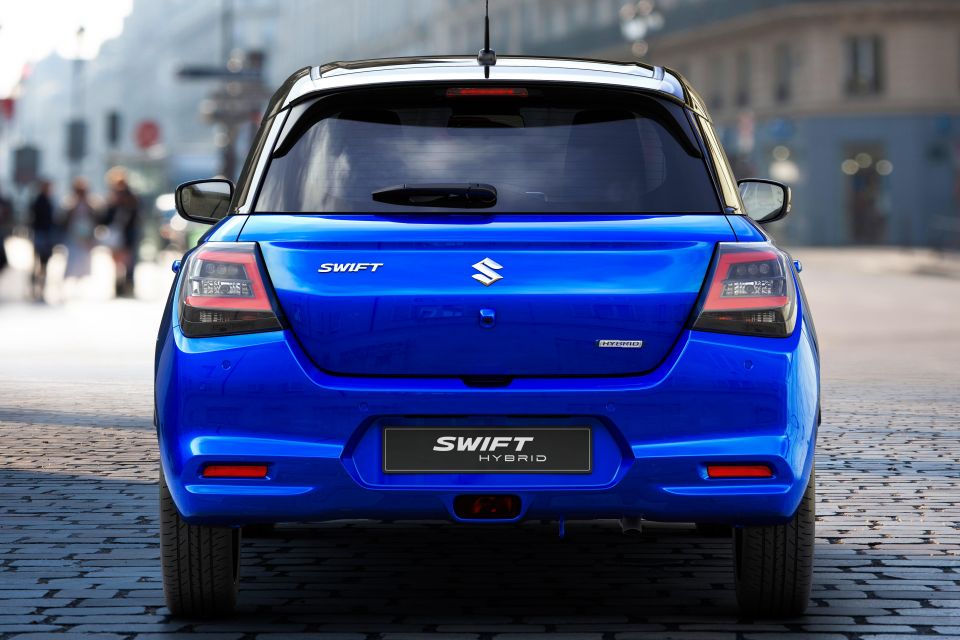
| Aftersales Program | Suzuki Swift Hybrid |
|---|---|
| Warranty | 5 years, unlimited kilometres |
| Roadside assistance | 5 years |
| Service program | 5 years or 100,000 kilometres |
| Service intervals | 12 months or 15,000 kilometres |
Update, 21/6/2024 – Suzuki Australia has fully detailed the Swift Hybrid’s five-year servicing program. See below
| Service Interval | Pricing |
|---|---|
| 12 months or 15,000km | $319 |
| 24 months or 30,000km | $429 |
| 36 months or 45,000km | $409 |
| 48 months or 60,000km | $449 |
| 60 months or 75,000km | $349 |
| 60 months or 90,000km | $649 |
| 60 months or 105,000km | $569 |
Buy your new car without the stress. It's fast, simple and completely free.

Great service from Travis and team, second time I have used this business would not hesitate to recommend them to anyone
Craig C.
Purchased a Ford Ranger in Sunshine Coast, QLD
CarExpert helped Craig save $7,224 on his Ford Ranger, now let us save you on your next new car.
Get your BEST priceThe Swift has always been a sweet thing, but the previous model was simply too expensive for what it was at the end of its life.
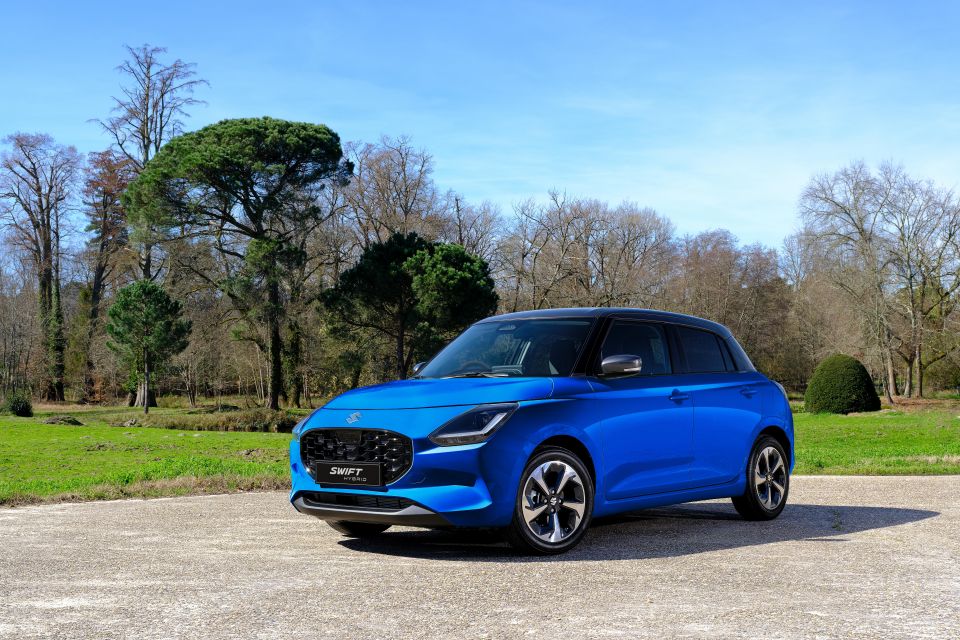
This new one now seems like ripper value by comparison.
It has gone from one of the more expensive options in the segment to one of the cheapest, and has managed to pack in a super efficient drivetrain and EU6 emissions tech for many thousands less than more complex rivals.
Despite its mild evolution into the electrified age, the new Swift really stays true to its roots in being a small, fun and cheap city car. Like its predecessors, it’s simple but enjoyable and just works.
With the new MG 3 moving quite a bit further upmarket than the old one, the Swift Hybrid now occupies a space where few other manufacturers dare to play.
It’s not much more than a Kia Picanto, but is larger, more efficient and better to drive, while being thousands less than an equivalent MG 3 Hybrid+ or Toyota Yaris Hybrid.

Look, it’s not perfect. There’s probably room for a cheaper non-hybrid option like what’s available in Japan which could push the price closer to $20,000, and it would have been nice to see the manual available in Plus and GLX grades.
It’s also lacking in cabin material quality and tactility compared to the class leaders, and its boot is smaller than key rivals. Some buyers may lament the need for 95 RON too, but you’re using less of it so it balances out… right?
Given the Swift Hybrid is lineball with the new petrol-powered MG 3 on price with better efficiency than the MG 3 Hybrid+, I think we might be about to see a big swing in the light car segment in favour of Japan.
Let’s face it, in a world where cars are getting more complex and more expensive, the Swift is a refreshing reminder that basic, cost-effective and efficient motoring is still a reality in Australia.
It’s definitely worth a look.

Click the images for the full gallery
MORE: Buy a Suzuki Swift MORE: Everything Suzuki Swift
Where expert car reviews meet expert car buying – CarExpert gives you trusted advice, personalised service and real savings on your next new car.
James is an automotive journalist based in Melbourne, Australia. Before joining CarExpert.com.au in 2020, James has worked at leading auto media outlets including Carsales and CarAdvice, as well as at Pulse agency for Ford Australia's communications team. In 2019 James made Mumbrella's 'Top 20 most prolific web authors in Australia' list after publishing 1,360 articles between March 1, 2018 and February 28, 2019 for CarAdvice. James is also an Ambassador for Drive Against Depression – an Australian charity whose mission is to support mental wellness through the freedom of driving and a shared love of cars.


James Wong
5 Days Ago


James Wong
5 Days Ago
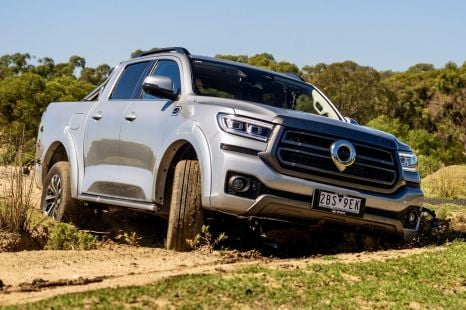

Max Davies
4 Days Ago
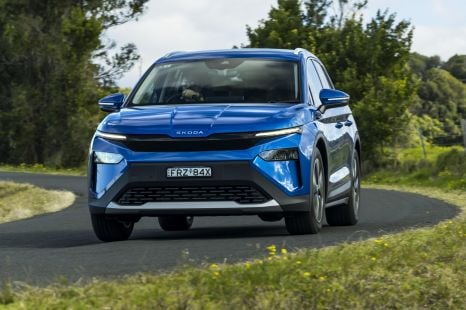

Josh Nevett
2 Days Ago
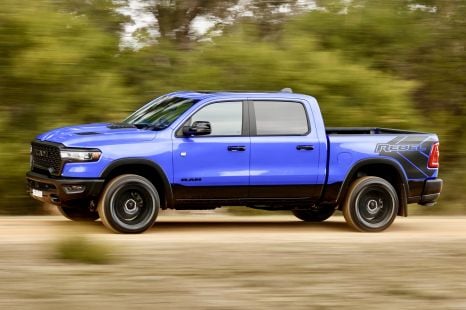

Max Davies
2 Days Ago
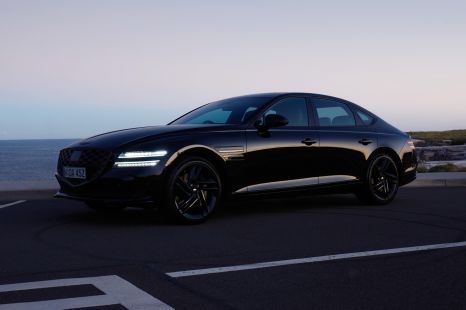

William Stopford
1 Day Ago